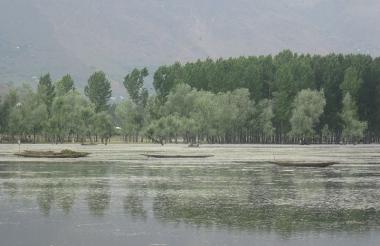
More than 2 million willow trees - once a key source of wood for cricket bats, fruit boxes and fires - will be cut down around Kashmir's Wular Lake, as part of efforts to revive the region's largest flood basin.
Overlooked by the Himalayas, Wular, one of Asia's biggest freshwater lakes, sits 34 km northwest of Kashmir’s summer capital, Srinagar.
Known for its deep, pristine waters, the lake has suffered extensive degradation in recent decades.
In a 2007 study, conservation group Wetlands International said the lake originally covered an area of nearly 218 square kilometres, including 58 sq km of marshland.
It shrank in size by 45% over a century - from about 158 sq km in 1911 to 87 sq km in 2007 - as it was drained for agriculture and willow plantations.
The government of Jammu and Kashmir now plans to remove some 2.1 million willows and 20 million cubic metres of silt from the lake in a conservation programme starting next month, which it says will also boost eco-tourism.
Willow planting began in Wular in 1924, mainly to provide firewood, and the plantation area was brought under Kashmir’s forest department in the 1980s.
In the 1980s and 1990s, the region's agriculture arm planted vast areas with willow as demand soared for wood to make cricket bats and fruit boxes.
But in recent years, experts have traced problems linked to heavy siltation - including less water in the lake and declining fish stocks to the presence of the willow trees.
These plantations act as a barrier to the silt-laden waters of the River Jhelum, forcing it to discharge its sediment load into the lake, thereby reducing its water-holding capacity.
Wular Conservation and Management Authority (WUCMA), said remote sensing imagery showed willow plantations extend across an area of about 27 sq km.
The trees, combined with severe siltation where they grow, have reduced the lakes capacity by one fifth.
Taking away more than 20 million cubic metres of silt would increase the depth of lake by 3.5 metres (11.5 ft).
Experts have identified some potential short-term losses from the planned conservation measures - which are due to cost INR 4.24 billion rupees ($64.5 million) - such as algae blooms caused by the release of soil nutrients into the water after the trees are felled.
But the benefits should outweigh any potential negative impacts.